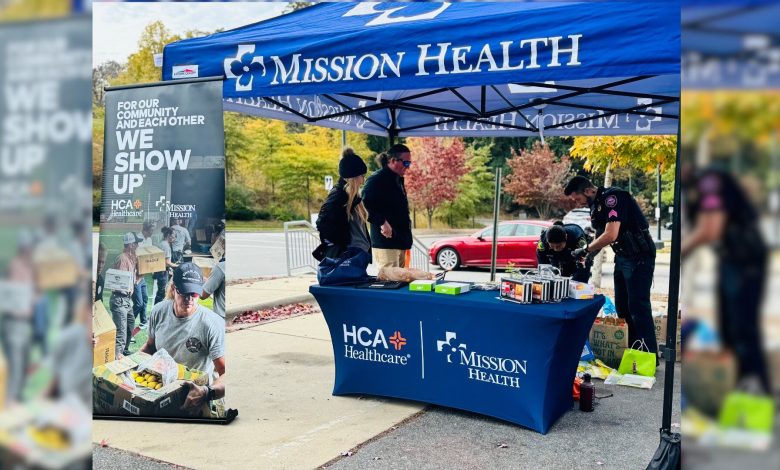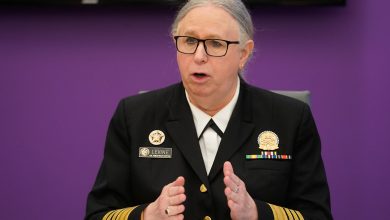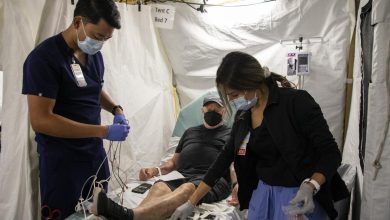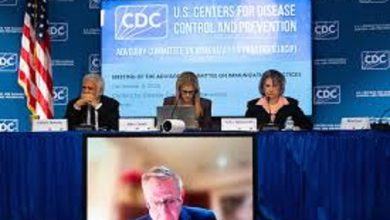Mission Health’s “Crush the Crisis” Event Collects 300+ Pounds of Unused Medications

Mission Health hospitals and local law enforcement teamed up on Oct. 25 for the latest installment of “Crush the Crisis,” HCA Healthcare’s annual prescription drug take-back day — and the result was striking: residents turned in more than 300 pounds of unused and expired medications at collection sites across the Mission Health system. The event is part of a broader, multi-year effort to reduce the amount of prescription medicine that lingers in home medicine cabinets and can be misused, diverted or accidentally consumed.
This fall’s local effort came during the nationwide National Prescription Drug Take Back Day, and Mission Health’s network — including Mission Hospital in Asheville, Angel Medical Center in Franklin, Blue Ridge Regional Hospital in Spruce Pine, Highlands-Cashiers Hospital in Highlands, Mission Hospital McDowell in Marion and Transylvania Regional in Brevard — served as convenient, secure drop-off locations. Combined totals reported by Mission Health showed the following haul: Mission Hospital in Asheville collected the largest share with 146 pounds; Blue Ridge Regional reported 73 pounds; Mission Hospital McDowell turned in 44 pounds; Angel Medical Center brought 35 pounds; Transylvania Regional weighed in at 15 pounds; and Highlands-Cashiers collected 10 pounds. Those individual site numbers add up to more than 300 pounds of medication that can now be safely—and permanently—removed from circulation.
Why collection days like “Crush the Crisis” matter
Unused prescriptions in the home are not an inert problem. Studies and federal data have repeatedly shown that a large share of nonmedical use of prescription medications originates from pills that were originally prescribed to a family member or friend. People may keep old pills for “just in case,” fail to dispose of them properly, or simply forget they exist. Those pills can then be diverted, stolen, taken by teenagers experimenting with a friend’s prescription stash, or mistakenly ingested by children or pets. Events such as Crush the Crisis give the public a safe, anonymous and environmentally responsible way to dispose of these medications, while also serving as a public education moment about the risks of keeping unused drugs at home. The HCA Healthcare program explicitly aligns with the DEA’s National Prescription Drug Take Back Day and national efforts to reduce opioid misuse and prescription diversion.
How the event works — the logistics behind safe disposal
Take-back events are deliberately straightforward for participants: between set event hours, people can arrive at designated collection points and hand over unwanted medications to staff who then secure them for proper disposal. Collection is typically anonymous — no questions asked — and law enforcement is often present so that controlled substances can be handled according to applicable laws and regulations. After the event, pills are processed and destroyed in a manner that prevents diversion and minimizes environmental harm. In Mission Health’s case, hospital staff, volunteers and uniformed officers staffed collection tables to accept everything from outdated antibiotics to leftover pain medications. The goal is both practical (stop pills from being misused) and symbolic: seeing a community show up to remove hundreds of pounds of medication demonstrates broad public awareness and buy-in.
Numbers in context: local impact, national movement
While the 300+ pounds collected by Mission Health at these local sites is significant for Buncombe and surrounding counties, it’s also one piece of a much larger HCA Healthcare enterprise effort. HCA’s Crush the Crisis campaign has been running since 2019 and, across the enterprise, has collected tens of thousands of pounds of medications. In 2024 alone, HCA reported collecting more than 21,000 pounds at its take-back events, and the organization has reported more than 88,000 pounds collected since the program’s inception. Those enterprise numbers underscore how a coordinated, annual push — multiplied by dozens or hundreds of local collection points — can remove millions of doses of medication from potential misuse each year. Mission Health’s contribution strengthens that larger impact while addressing community-level risk.
Voices from the event: why people came and what they said
At ground level, the event drew a cross-section of people: elderly residents clearing out decades of accumulated prescriptions, parents wanting to keep cabinets safe for their kids, and community members who’d seen the damage from misuse and wanted to help reduce the local supply. Hospital and law enforcement spokespeople emphasized safety and confidentiality, encouraging everyone with old or expired meds to bring them in. A common theme among participants was surprise: many people didn’t realize that flushing pills down the toilet or tossing them in the trash could present serious environmental or safety risks — or that there was an easy, lawful alternative. Those conversations — the small, personal stories shared at a collection table — are as important as the pounds of pills collected, because they indicate shifting community norms about how to treat unused medication.
Public health benefits beyond diversion prevention
Removing unused medications from homes lowers immediate diversion risk, but it also carries other public health benefits. Proper disposal reduces the chance that people will self-medicate with leftover drugs long after their intended course of treatment has ended. That’s especially important for antibiotics, where inappropriate use can contribute to resistance, and for opioids and benzodiazepines, where leftover tablets can contribute to addiction or accidental overdose if taken unintentionally. Take-back events also provide a springboard for related community resources — information on medication safety, instructions for storing prescriptions safely, and referrals to addiction treatment services for people who recognize they or someone they love may need help. In short: the single act of dropping off a bottle can trigger a cascade of safer behaviors.
Environmental stewardship: disposing medication responsibly
One big question sometimes arises: what happens to medications after they’re collected? Responsible disposal aims to prevent both diversion and environmental contamination. Many take-back programs use methods such as high-temperature incineration at licensed facilities, which safely destroys active pharmaceutical ingredients. Flushing or throwing pills in the trash can lead to trace pharmaceuticals entering water systems or landfills; take-back events are an environmentally preferable alternative. HCA and participating hospitals generally coordinate with licensed disposal contractors to ensure collected medications are treated lawfully and safely, meeting both public safety and environmental protection standards.
Why annual repetition matters — behavior change takes reminders
One event can make a difference in a household, but sustained risk reduction requires repetition. That’s why programs like Crush the Crisis are run on an annual cadence and paired with year-round public education. People acquire prescriptions at irregular intervals — after surgeries, during acute illnesses, or when chronic conditions flare — so the set of unused medications in a home evolves over time. A single take-back day gives residents an opportunity to clear out what’s old now, but future prescriptions will arrive, and future opportunities to safely dispose of them will be needed. Regular events keep the topic in the public eye and normalize the habit of periodic medicine-cabinet audits. HCA’s aim of hitting cumulative milestones — such as their multi-year target of 100,000 pounds collected — is less about the number itself and more about creating expectations so that safe disposal becomes routine.
Partnerships make it possible: hospitals, law enforcement and volunteers
A successful take-back day is a team effort. Hospitals provide site space, medical staff and logistics support; law enforcement ensures controlled substances are handled under legal guidelines; volunteers and community groups amplify outreach and staffing. For Mission Health, the partnership model allowed multiple hospitals within the system to host local collection tables simultaneously, making it convenient for more people to participate. Volunteers who wear Crush the Crisis shirts and table tents with clear instructions help reduce confusion, keep traffic orderly and provide a friendly point of contact to answer common questions about what can and cannot be accepted. Those partnerships also send a broader civic signal: public institutions working together to protect communities.
Common questions: what can people bring (and what not to bring)
Most take-back events accept a wide range of prescriptions and over-the-counter medications in their original containers (or sealed bags). Often accepted items include pills, tablets, capsules and patches. Many sites do not accept liquids, needles or sharps, illicit drugs, or inhalers — those require specialized disposal channels. For items that are not allowed at community collection events, pharmacies or local hazardous waste programs often provide alternate options. Mission Health’s event materials and staff typically warned attendees about limitations ahead of time so people would know what to expect when they arrived. If someone is unsure about whether an item is accepted, it’s usually safest to ask event staff or consult a hospital or law enforcement website before bringing it.
How communities can keep the momentum going
Removing more than 300 pounds of medication is a notable achievement, but the work continues. Hospitals and civic groups can maintain momentum by: promoting regular medication reviews during primary care visits; encouraging prescribers to prescribe only the minimal effective quantity of opioids when alternatives exist; providing clear year-round signage about safe disposal options; and partnering with schools and parent groups to educate teens about the dangers of medication diversion. On an individual level, people can help by periodically auditing their medicine cabinets, storing medications in locked boxes if there are children or people at risk in the home, and setting reminders to bring expired or unused meds to the next take-back event. Small, consistent actions add up — and community norms shift when enough households make them standard practice.
A final note: what the numbers really represent
When Mission Health reports “more than 300 pounds” collected, it’s tempting to treat that as a single metric of success and move on. But that figure represents hundreds — sometimes thousands — of potentially harmful doses kept out of circulation, dozens of households that took a moment to clear a cabinet, and a larger community conversation about safety and stewardship. Collection totals are measurable, but their ripple effects — reduced accidental poisonings, fewer pills available for diversion, increased public awareness — are the ultimately meaningful outcomes. For hospital systems, law enforcement and public health departments, these events are a practical intervention with human outcomes behind every pound weighed on the scales.
Looking ahead: more opportunities to participate
If you missed this year’s event, there are still ways to get involved. Many hospitals and municipal governments host periodic take-back events throughout the year; local pharmacies often have safe-disposal kiosks; and state environmental agencies can advise on regulated disposal of nonaccepted items. Keeping an eye on local hospital press releases and law-enforcement social media accounts is a good way to learn about future Crush the Crisis events or related drop-offs. For Mission Health patients and neighbors, the Oct. 25 event is a reminder that community safety is a shared responsibility — and that there are easy, lawful options for handling medications you no longer need.
Mission Health’s 300+ pounds is both a concrete achievement and an invitation: the work of reducing prescription-drug harm is ongoing, and each household’s small step — a cleared medicine cabinet, a visit to the next take-back day, a conversation with a prescriber about safer alternatives — helps build safer communities. If you have unused medications, consider clearing them out and bringing them to the next collection — it’s a simple action with a big local payoff.




